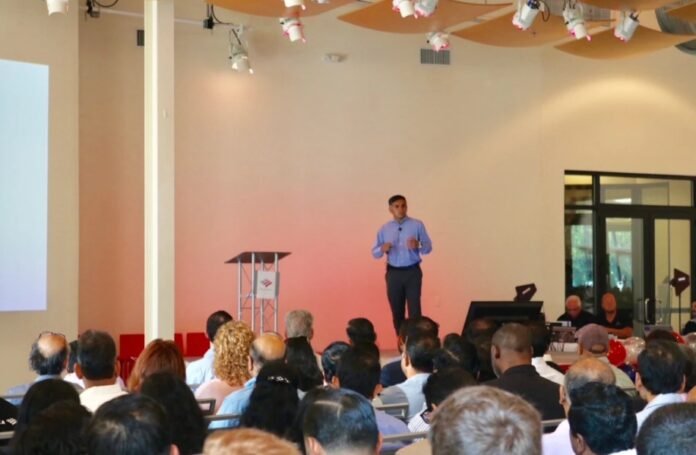In an era where technology is reshaping every industry, one of the biggest players in the financial sector, Bank of America, is leading the way with artificial intelligence (AI) integration. With more than 90% of its employees now using AI in their daily work, the bank is embracing the transformative power of this technology to enhance efficiency, improve customer experience, and maintain a competitive edge.
This shift toward AI isn’t just a passing trend. It represents a fundamental change in how the banking industry operates. From enhancing internal operations to providing personalized services to millions of customers, AI has become a core part of Bank of America’s strategy. The significant adoption rate among employees underscores just how integral AI has become to the bank’s functioning and its ability to meet the evolving demands of the financial world.
The AI Revolution at Bank of America
Bank of America’s embrace of AI is not limited to a handful of specialized roles or high-tech labs. In fact, over 90% of the bank’s employees across various departments now rely on AI to carry out their tasks. Whether it’s streamlining back-end processes, improving data analysis, or assisting with customer service, AI tools are being woven into the fabric of the bank’s operations.
One of the most notable examples of AI usage at Bank of America is the use of its virtual assistant, Erica. This AI-powered chatbot, launched in 2018, allows customers to interact with the bank via voice or text to perform a variety of banking tasks, from checking balances to paying bills and even receiving personalized financial advice. As of now, millions of customers regularly engage with Erica, making it one of the most widely used virtual assistants in the financial sector. This accessibility to AI-driven services has empowered customers to manage their finances more efficiently while also lightening the load on human staff.
Enhancing Efficiency and Reducing Operational Costs
The integration of AI at Bank of America is not just about enhancing customer service; it’s also about boosting internal efficiency. AI’s ability to analyze vast amounts of data at lightning speed allows the bank to automate repetitive tasks, identify patterns, and make more informed decisions. This automation reduces the need for manual intervention, streamlines operations, and speeds up processes, from loan approvals to fraud detection.
For example, AI is heavily utilized in the bank’s anti-money laundering (AML) efforts. The system can sift through massive amounts of transaction data, flagging potentially suspicious activities that might otherwise go unnoticed. By automating these processes, Bank of America can allocate resources more effectively and reduce the risk of financial crime, all while ensuring compliance with regulatory requirements.
Additionally, the bank uses AI for predictive analytics, which helps it anticipate customer needs and behaviors. This proactive approach allows Bank of America to offer services and products that are more tailored to each individual customer, improving satisfaction and building stronger relationships.
Transforming the Customer Experience
Customer experience is one of the most significant areas where AI is making its mark. As customer expectations evolve, they demand faster, more personalized services, and AI is helping to meet these expectations. With tools like Erica, customers can access banking services 24/7 without waiting in line or navigating through complex menus. The AI assistant’s ability to understand natural language and provide relevant information in real-time has transformed how customers interact with the bank.
Moreover, AI is enabling the bank to offer more personalized financial advice. Using AI-driven insights, Bank of America can offer customized recommendations based on a customer’s spending habits, financial goals, and even real-time data like changes in the stock market. This level of personalized service was once reserved for wealth management clients with high balances, but with AI, it is now accessible to the average customer.
The use of AI also extends to the bank’s mobile app, where it helps optimize user experiences, making navigation smoother and faster. For example, AI-powered algorithms can identify and highlight relevant offers for customers, suggest ways to save money, and provide real-time alerts to help manage spending.
The Future of AI at Bank of America
While Bank of America has already made significant strides in integrating AI into its operations, this is just the beginning. As AI technology continues to evolve, the bank is investing heavily in expanding its capabilities. The potential uses of AI in banking are nearly limitless, and the bank is looking ahead to capitalize on these innovations.
One area with significant potential is the use of AI in risk management. With the ability to analyze large datasets and identify emerging trends, AI could be pivotal in detecting financial risks before they become problems. Whether it’s fluctuations in the financial markets, changes in regulatory environments, or shifts in consumer behavior, AI could help the bank stay ahead of the curve and make more informed decisions in real time.
Another area of growth is the integration of AI with blockchain technology, which could further streamline transactions, improve security, and create more transparent systems for customers and businesses alike. Bank of America is already exploring these possibilities, recognizing that the future of banking will be driven by the convergence of multiple technologies working together seamlessly.
Ethical Considerations and Challenges
While AI offers tremendous benefits, its widespread use also raises important ethical and regulatory questions. As AI becomes more embedded in banking, the potential for bias in decision-making becomes a concern. Bank of America is taking steps to address these challenges by ensuring its AI systems are transparent and operate within ethical guidelines. The bank is also working to ensure that its AI systems do not reinforce existing inequalities in financial services.
Another challenge is the potential for job displacement as automation becomes more prevalent. While AI can improve efficiency, it’s essential to strike a balance between automation and human interaction. Bank of America is committed to retraining employees and preparing them for the evolving landscape, ensuring that the workforce remains adaptable and equipped with the skills needed to thrive in an increasingly digital environment.
Conclusion
Bank of America’s extensive use of AI is a glimpse into the future of banking—one where technology and human expertise work hand in hand to deliver better, faster, and more personalized services. With over 90% of its employees now utilizing AI, the bank has positioned itself at the forefront of this technological transformation. As the bank continues to innovate and refine its AI capabilities, it will undoubtedly shape the future of financial services for years to come. For customers, this means more efficient, convenient, and tailored banking experiences, while for the bank itself, AI represents a powerful tool for growth, efficiency, and risk management in an increasingly competitive and complex market.




